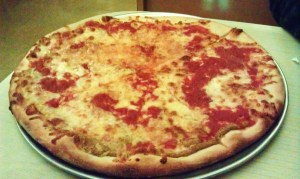It’s that time of year again when my mind and tastes turn to all things New Orleans. Carnival season officially started on January 6 (3 Kings Day/Epiphany) and runs until Mardi Gras…the day before Ash Wednesday. Even as I fret about the post holiday “bloat”, I find myself planning if/when I’ll make a King Cake; who I will share Muffalettas with; when I’ll make my next batch of “Jersey Street Gumbo,” etc. My pre-dinner Negroni or Manhattan morphs into a Sazerac; the medieval influenced Christmas carols segue into the second line and rumba rhythms.
Therefore, it really wasn’t a surprise that the daily question of “what do you want for dinner tonight” was answered with a dish from the Cajun/Creole canon. “Chicken a la Bonne Femme.”
I’m told the name means “Good woman’s chicken” or “Good wife’s chicken.” What it is, is just plain G-O-O-D!
While there are myriad v ersions of preparing this dish, we have always stuck with the recipe we found in this book:
ersions of preparing this dish, we have always stuck with the recipe we found in this book:
We picked this up on our first trip to New Orleans back in 1989. We bought its sequel on our second trip a year later. We use them as much for reference and inspiration as we do for actually preparing all the recipes from them. The recipe for Chicken Bonne Femme is one we do go back to often. It’s a little labor intensive but rustic, satisfying and oh so tasty. Unfortunately, this recipe is for a company-sized meal (serves 8).
On this damp, chilly night when we were craving the dish, we sought a way to scale it down.
Using what we had at the ready, we were able to put together a very tasty rendition of this homey dish just the right size for us.
Give this a try…the “small version” for two. Add a bottle of wine and simple salad. It’s a real big easy…
Chicken Bonne Femme (for two)
(Poulet bonne femme pour deux)
-
3/4 to 1 pound chicken thighs
-
2 medium Yukon Gold potatoes, scrubbed, skin left on, sliced about 1/4 inch thick
-
1/4 pound thin sliced pancetta
-
1 medium yellow onion sliced thinly
-
Salt, pepper and red (cayenne) pepper to taste
Preheat oven to 350 degrees F.
In a 10 inch, ovenproof skillet, cook the pancetta slices over medium low heat until nicely browned. Remove from pan and reserve.
Increase heat to medium and in the fat that has rendered out from the pancetta, lightly brown the chicken thighs (about 3 minutes per side.) Season well with salt, pepper, and red pepper. Remove from pan and reserve.
Brown the sliced potatoes in the remaining drippings 2 or 3 minutes per side. Add a little olive oil if need be to prevent the potatoes from sticking. Remove from pan.
In same skillet, layer some of the chicken thighs, the potatoes, some of the crisped pancetta and some of the onions. Repeat layers as needed to use up ingredients.
NOTE: don’t be afraid to season the potatoes as you layer them into the pan; you can be assertive with the seasoning of this dish.
Cover the pan and place in the pre-heated oven. Bake for 40 minutes. Remove cover and bake for 10 more.
Remove from oven and plate up. Serves 2.

